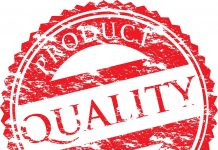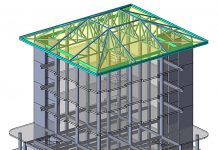MOLA’s Senior Consultant Sophie Jackson, describes three very different applications of BIM: for archaeological interpretation, predictive modelling and heritage management
BIM and archaeology might seem unexpected partners; BIM encapsulates the bright new future of data management, which will help us to design, build and manage our environment more effectively. So how does archaeology, a subject that is all about examining and interpreting evidence of the past, relate to this?
BIM as a tool in archaeological interpretation
Archaeological deposits are the surviving physical evidence of people doing things in the past. Unsurprisingly, they did things that are very familiar to us today; they built roads and buildings, they cooked food, ate some of it and threw away the waste, they made things, and the list could go on and on. How they did all this, what they believed and how society was structured was utterly different and unfamiliar and is what makes archaeology an interesting and relevant subject. Interpreting archaeological evidence is a really difficult task and is where BIM methodologies can help.
Archaeological deposits are the surviving physical evidence of people doing things in the past. Unsurprisingly, they did things that are very familiar to us today; they built roads and buildings, they cooked food, ate some of it and threw away the waste, they made things, and the list could go on and on. How they did all this, what they believed and how society was structured was utterly different and unfamiliar and is what makes archaeology an interesting and relevant subject. Interpreting archaeological evidence is a really difficult task and is where BIM methodologies can help.
The physical evidence of all of this human activity can be broken down into components – what archaeologists often refer to as contexts. In a city like London, where sites have been continuously occupied over centuries, there might be thousands of components of the past surviving beneath a modern building. At the lowest levels, we might find a foundation for a Roman building, several floors from the building, all buried beneath the later, collapsed roof. Cutting through these contexts we might have later medieval foundations, burials and so on. These component layers contain artefacts and environmental material that allow us to forensically piece together what happened on the site.
Over twenty years ago we realised that the only way to create a comprehensive record of these components of the past that could hold all of the associated metadata and allow us to interpret what we were finding, was to put it all into a single digital framework, which we call the MOLA GIS. It is effectively an archaeological BIM environment that holds all of the records in a compatible system that can be revisited and interrogated, allowing future archaeologists to reinterpret the results as new information becomes available.
Until recently these records consisted of digitised site plans with associated photographs and metadata in an Oracle database. Today, rapid developments in 3D photographic surveying mean that high resolution, millimetre accurate records can be created very rapidly on site and loaded directly into BIM systems.
Archaeology, BIM and predictive modelling
Predictive deposit models are an ideal baseline dataset for BIM and have commercial applications. MOLA has a team of expert geaoarchaeologists who model buried landscapes, drawing on data from historical boreholes, geaorchaeological boreholes and site investigation work. In areas where landscapes have changed as a result of river erosion or where there has been significant build up from landfill, it is possible that archaeological sites can be buried many metres below modern ground level.
Knowing where past human settlement was likely to be located is very important for developers today. Geoarchaeologists examined over 1,000 borehole records over the area of the Olympic Park to identify where there could have been islands of dry ground in the Lea Valley, allowing archaeological work to be targeted. Standard borehole modelling software used in the mining and geotechnical industries is used to create topographic models, which are BIM compliant.
BIM, Heritage Management and Development
Having BIM compliant archaeological surveys is particularly important on large and complex construction projects where the design and programme could be influenced by archaeology. It is critically important that the whole team can access and use information on what archaeological deposits might be there, what has been recorded and removed, what is left, and any archaeological exclusion zones.
Most major projects now require archaeological survey records to be produced in a BIM compliant format and submitted to centralised BIM systems. MOLA’s records for recent infrastructure projects like the Olympic Park, Crossrail and Thames Tideway Tunnel are just some of the larger examples.
Where historical buildings or structures are to be retained and incorporated into new developments, a BIM approach can help with interpretation as well as informing construction and maintenance programmes. Our building recording and geomatics team prepare surveys which breakdown the structures into their component parts and assign phasing and significance. This information can be compiled in a BIM format which means that in the future it will be much easier for anyone working on these historical structures to understand what they are looking at, what interventions have taken place in the past and the appropriate maintenance regime now. 3D scans or photogrammetric surveys of historical buildings and structures are transforming this area of work, providing accurate baseline data, to a higher standard than ever before in a fraction of the time that full building surveys used to take.
Over the next few years as digital recording becomes better and better, we can expect a revolution in archaeological and heritage work on many fronts with BIM as the crucial tool to helping us understand, present and manage our past.
Sophie Jackson
Senior Consultant
MOLA (Museum of London Archaeology)
Tel: 020 7410 2200
enquiries@mola.org.uk
www.twitter.com/MOLArchaeology













